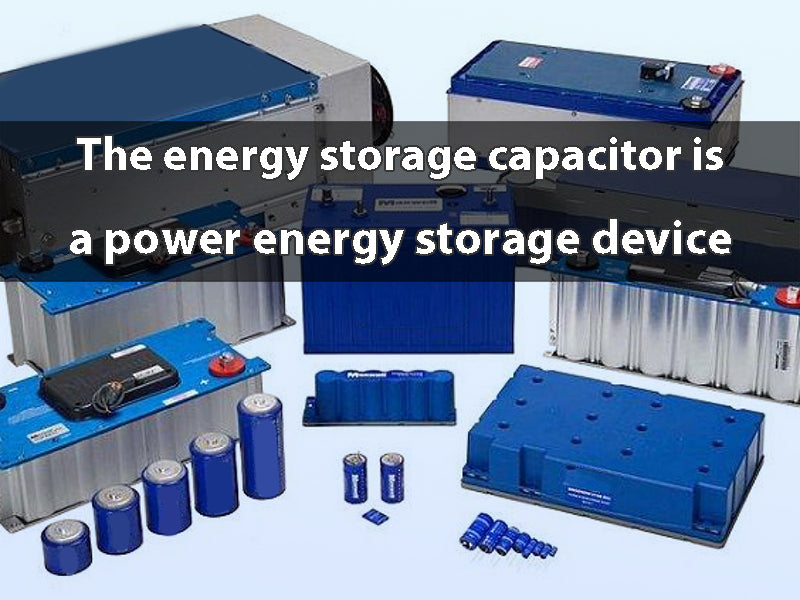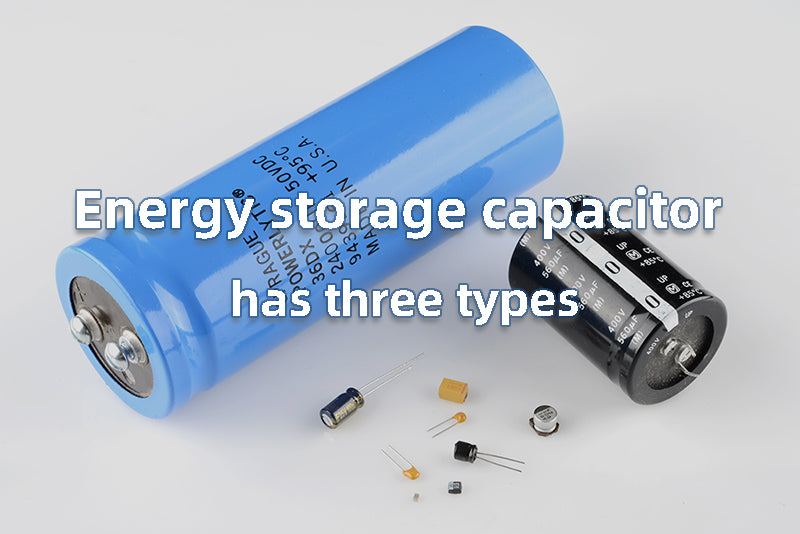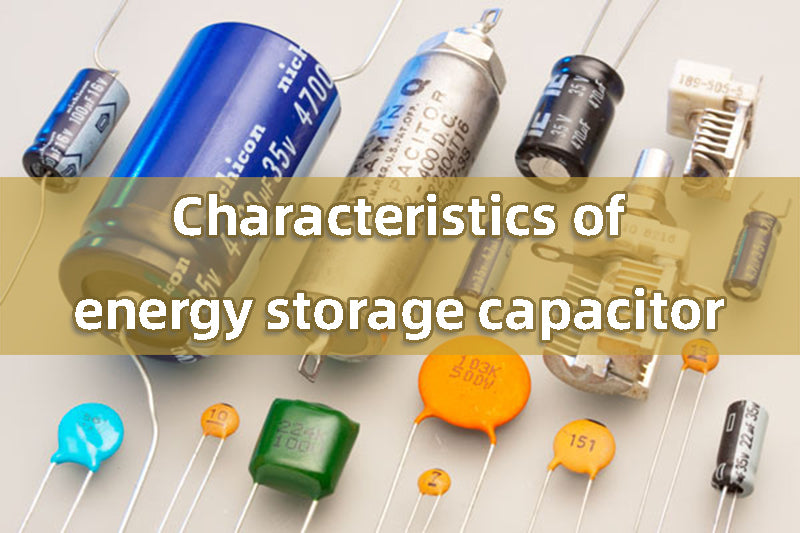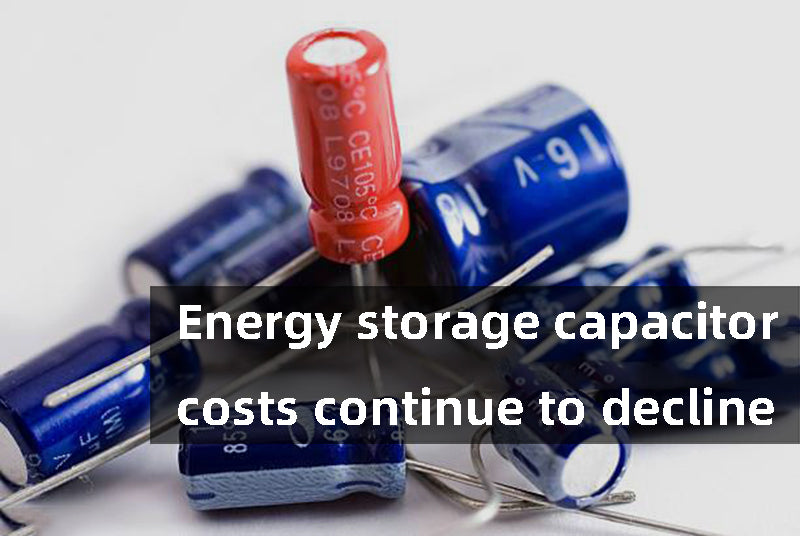
Main content:
- The energy storage capacitor is a power energy storage device
- Energy storage capacitor has three types
- Characteristics of energy storage capacitor
- The energy storage capacitor is responsible for short-term high power peaks
- Energy storage capacitor costs continue to decline
- Energy storage capacitor participate in power grid frequency regulation
Energy storage capacitor have broad prospects in the fields of grid frequency regulation, hybrid energy storage and automobiles. Mainly reflected in technological progress, the energy density of energy storage capacitor has been improved. And do you know that some battery also has high energy density? You can read our battery high energy density article to learn more. In addition, the cost of energy storage capacitor has been reduced, and large-scale mass production and localization of the industrial chain have been realized.
Since 2022, energy storage capacitor have been used in China for the first time in the integration of fire-storage peak regulation and frequency regulation, primary frequency regulation, and shore-storage integration projects. The energy storage capacitor industry is ushering in an accelerated inflection point.
The energy storage capacitor is a power energy storage device
Energy storage capacitor are power energy storage devices, and the triple advantages of technology, cost and policy help open up a market space of tens of billions. Compared with traditional capacitor, energy storage capacitor have higher energy density and higher power density than batteries. They are a new type of power energy storage device with short charging time, long service life, good temperature characteristics, and environmental protection.
Energy storage capacitor have been widely used in consumer electronics, industry, defense and military industries as backup power supplies, power supplies, and energy recovery systems. Lower energy density and higher cost of energy storage are two factors that have limited its application range in the past.
At present, the energy density of hybrid supercapacitor has been greatly improved, and energy storage capacitor are mainly composed of positive and negative electrodes, electrolytes, and diaphragms. Energy storage capacitor belong to electrochemical energy storage devices, which are mainly composed of positive and negative electrodes, electrolytes, and diaphragms to prevent short circuits. The electrode material has the characteristics of high specific surface area.

The separator is generally an electronic insulating material with a fiber structure. The electrolyte is selected according to the properties of the electrode material. Taking the mainstream electric double layer capacitor in the market as an example, when charging, the positive and negative ions in the electrolyte move rapidly to the two poles under the action of the electric field, and the electric double layer is formed at the interface between the electrode and the electrolyte to store the charge.
Energy storage capacitor has three types
According to the working principle, energy storage capacitor can be divided into three categories. Electric double layer capacitor (EDLC) are the mainstream supercapacitor types in the market. Hybrid energy storage capacitor (HUC) have higher energy density and are becoming an important research and development direction.
- Electric double layer capacitor: The charging and discharging process of EDLC is completed by the physical movement of ions, and there is no chemical reaction. A dense charge layer, ie an electric double layer, is formed on the surfaces of the two electrodes, resulting in a potential difference between the electrodes, thereby realizing energy storage. During discharge, the anions and cations leave the surface of the solid electrode and return to the body of the electrolyte.
- Faraday pseudocapacitance: On the surface of the electrode or in the two-dimensional or quasi-two-dimensional space in the bulk, the electroactive species undergo underpotential deposition, and a highly reversible chemical adsorption/desorption or redox reaction occurs. Because pseudocapacitance can be generated inside the entire electrode, higher energy density can be obtained than that of electric double layer capacitor, but it is difficult to commercialize due to the high price of precious metal electrode materials and limited charge-discharge cycle stability.
- Hybrid energy storage capacitor: The electric double layer material is used as the positive electrode, and the pseudocapacitor or battery material is used as the negative electrode, which combines the advantages of energy storage capacitor and pseudocapacitor or batteries. Lithium-ion storage capacitor (LICs) are typical representatives of hybrid supercapacitor. During the charging and discharging process, the capacitor electrode undergoes a Faradaic reaction, ions are adsorbed/desorbed on the electrode surface, and the battery electrode undergoes a Faradaic reaction, and lithium ions are intercalated/desorbed.

Characteristics of energy storage capacitor
High-power characteristics: Different from lithium-ion batteries when charging, lithium ions need to be combined with charges and embedded in the micropores of the negative electrode carbon layer. When discharging, they need to be de-embedded from the negative electrode carbon layer. The charge movement of the energy storage capacitor during charging and discharging occurs in the electrode. Therefore, the power density of the storage capacitor is significantly higher and the charging and discharging speed is significantly faster.
In contrast, in terms of power density, the supercapacity of the electric double layer can reach up to 40 kW/kg, and the lithium battery is 1 to 3 kW/kg. In terms of charging and discharging time, EDLC can reach the second level, HUC is at the minute level, and lithium battery is at the hour level. High reliability features: In terms of operating temperature, the operating temperature range of lithium batteries is −20 ~ +60 °C, and the storage capacitor can be widened to −40 ~ +85 °C.
In terms of working life, since the charge movement during the charging and discharging process is completely reversible, the number of charging and discharging can reach 1 million times, and the working life can reach 15 years. In addition, the energy storage capacitor will not burn when it is short-circuited or punctured. Compared with the lithium battery that is prone to spontaneous combustion or even explosion when short-circuited or punctured, the energy storage capacitor is safer.
Environmental protection characteristics: energy storage capacitor do not contain heavy metals and harmful chemical substances, and their production, use, storage and disassembly processes will not pollute the environment, and are ideal environmentally friendly energy sources, while lithium batteries cannot be decomposed and are prone to serious pollution to the environment . As a power-type energy storage device, energy storage capacitor complement and synergize with energy-type lithium batteries by virtue of their high power and long cycle life characteristics.

Lithium batteries, as energy-based energy storage devices, have been widely used in various long term energy storage scenarios, while energy storage capacitor can be used for short-term high-power, multi-cycle discharge individual storage by virtue of their high power and long cycle life characteristics. energy scenarios, or form a hybrid energy system with lithium batteries to achieve complementation and synergy with energy-based lithium batteries.
The energy storage capacitor is responsible for short-term high power peaks
In a hybrid energy system, the main energy sources such as lithium batteries provide long-term low-power energy output. The energy storage capacitor is responsible for high power peaks and fast response. The energy storage capacitor can be charged from the main energy source or collect the energy fed back by the system.
The introduction of energy storage capacitor in the energy system can achieve high power transient response and reduce the power output of the main power supply to extend its service life, thereby reducing the life cycle cost of the energy system. The energy density of energy storage capacitor is expected to be further improved. The energy density of an energy storage capacitor mainly depends on its specific capacitance and voltage.
Therefore, methods to further improve the energy density include increasing the electrode specific capacitance, developing electrolytes in the high electrochemical potential range, optimizing the structure of the energy storage capacitor, and reducing the consumption of the electrolyte by the device, etc. According to forecasts, the energy density of the energy storage capacitor system is expected to increase to 50-100Wh/kg in 2025, and may reach 100-200Wh/kg in 2030.

Energy storage capacitor costs continue to decline
The domestic substitution of electrode materials for energy storage capacitor is in progress, and the continuous cost reduction has become an inevitable trend. The upstream materials of energy storage capacitor mainly include electrodes, electrolytes, diaphragms, leads, etc. The electrodes, electrolytes, and diaphragms account for about 35%, 30%, and 20% of the cost, respectively. Among them, the electrolyte solution in China is relatively mature.
The local manufacturer Xinzhoubang occupies more than 50% of the market share of the electrolyte in China's energy storage capacitor, while the electrodes and diaphragms have long relied on imports due to high technical barriers. Among the electrode materials, 70-80% of the energy storage capacitor carbon is imported from Kuraray, Japan. Diaphragms are mainly imported from the United States, Japan and other countries. Japan's NKK occupies more than 60% of the world's energy storage capacitor diaphragm market share.
Energy storage capacitor participate in power grid frequency regulation
The installed capacity of new energy and the proportion of power generation have increased rapidly. As of 2021, China's wind power and photovoltaic installed capacity will be 328GW and 307GW, accounting for 27% of China's total installed power capacity. In 2021, wind power and photovoltaic power generation will be 655.6 billion kWh and 327 billion kWh, accounting for 12% of China's total power generation.
According to statistics, the proportion of wind power and photovoltaic power such as power walls generation in China's total electricity consumption will continue to increase, reaching about 16.5% in 2025. The energy storage capacitor are adapted to the short-term high-frequency and high-power frequency modulation needs of the power grid, and the applications on the power generation side, transmission and distribution side, and power consumption side are gradually implemented.
Energy storage frequency modulation is becoming a new frequency modulation auxiliary method with fast and accurate power response capability, but it is limited by the nominal cycle life of lithium batteries of about 5000 times. Most of the existing energy storage frequency regulation projects only respond to AGC secondary frequency regulation, not primary frequency regulation. The energy storage capacitor adapt to the short-term high-frequency and high-power frequency modulation requirements of the grid by virtue of their high-power and long-life characteristics.
Related article: supercapacitor battery, top 10 supercapacitor companies, top 5 home energy storage companies in China















